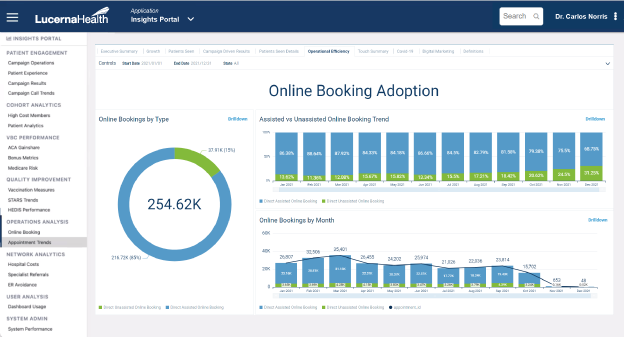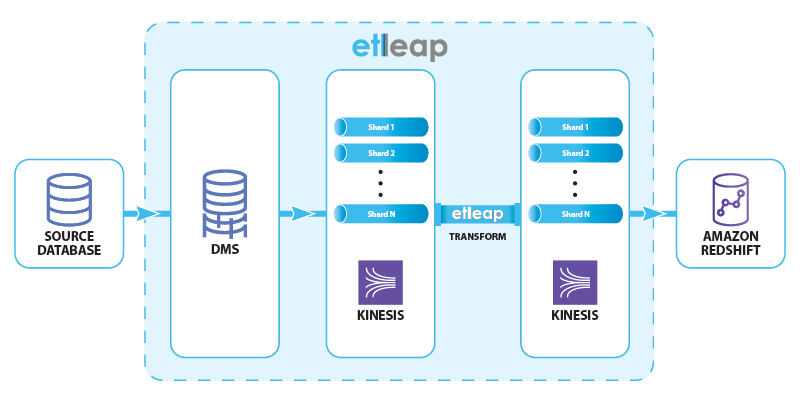AWS Big Data Blog
Category: Analytics
Visualize live analytics from Amazon QuickSight connected to Amazon OpenSearch Service
Live analytics refers to the process of preparing and measuring data as soon as it enters the database or persistent store. In other words, you get insights or arrive at conclusions immediately. Live analytics enables businesses to respond to events without delay. You can seize opportunities or prevent problems before they happen. Speed is the […]
Use unsupervised training with K-means clustering in Amazon Redshift ML
June 2023: This post was reviewed and updated for accuracy. Amazon Redshift is a fast, petabyte-scale cloud data warehouse delivering the best price–performance. Tens of thousands of customers use Amazon Redshift to process exabytes of data every day to power their analytics workloads. Data analysts and database developers want to use this data to train […]
Run queries 3x faster with up to 70% cost savings on the latest Amazon Athena engine
Amazon Athena is an interactive query service that makes it easy to analyze data in Amazon Simple Storage Service (Amazon S3) using standard SQL. Athena is serverless, so there is no infrastructure to manage, and you pay only for the queries that you run. In November 2020, Athena announced the General Availability of the V2 […]
Lucerna Health uses Amazon QuickSight embedded analytics to help healthcare customers uncover new insights
This is a guest post by Lucerna Health. Founded in 2018, Lucerna Health is a data technology company that connects people and data to deliver value-based care (VBC) results and operational transformation. At Lucerna Health, data is at the heart of our business. Every day, we use clinical, sales, and operational data to help healthcare […]
Integrate Etleap with Amazon Redshift Streaming Ingestion (preview) to make data available in seconds
Amazon Redshift is a fully managed cloud data warehouse that makes it simple and cost-effective to analyze all your data using SQL and your extract, transform, and load (ETL), business intelligence (BI), and reporting tools. Tens of thousands of customers use Amazon Redshift to process exabytes of data per day and power analytics workloads. Etleap […]
Announcing Amazon EMR Serverless (Preview): Run big data applications without managing servers
Today we’re happy to announce Amazon EMR Serverless, a new option in Amazon EMR that makes it easy and cost-effective for data engineers and analysts to run petabyte-scale data analytics in the cloud. With EMR Serverless, you can run applications built using open-source frameworks such as Apache Spark and Hive without having to configure, manage, […]
Effective data lakes using AWS Lake Formation, Part 2: Creating a governed table for streaming data sources
February 2023: The content of this blog post can be now be found on AWS Lake Formation public documentation. Please refer to it instead. We announced the general availability of AWS Lake Formation transactions, row-level security, and acceleration at AWS re:Invent 2021. In Part 1 of this series, we explained how to set up a […]
Amazon QuickSight: 2021 in review
With AWS re:Invent just around the corner, we at the Amazon QuickSight team have put together this post to provide you with a handy list of all the key updates this year. We’ve broken this post into three key sections: insights for every user, embedded analytics with QuickSight, scaling and governance. Insights for every user […]
Simplify Snowflake data loading and processing with AWS Glue DataBrew
May 2024: Connecting to Snowflake as a data source is now supported natively. To learn more, visit our documentation. Historically, inserting and retrieving data from a given database platform has been easier compared to a multi-platform architecture for the same operations. To simplify bringing data in from a multi-database platform, AWS Glue DataBrew supports bringing […]
Enforce customized data quality rules in AWS Glue DataBrew
GIGO (garbage in, garbage out) is a concept common to computer science and mathematics: the quality of the output is determined by the quality of the input. In modern data architecture, you bring data from different data sources, which creates challenges around volume, velocity, and veracity. You might write unit tests for applications, but it’s […]









